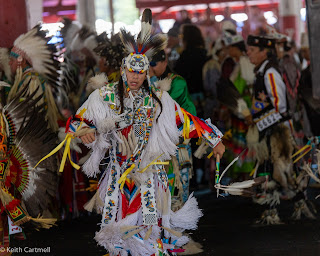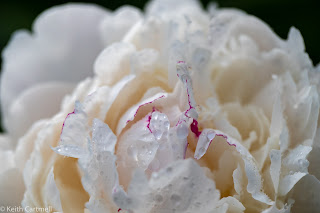I've lived next to the nation for 40 years, but know little about the people. That's on me. As far as I know I have no indigenous heritage, and acknowledge that I was raised in a settler culture, giving me all sorts of preconceptions. I carry that around, and it's mixed with great experiences working with Indigenous summer students, along with day to day life in Calgary. For my American readers, on any random day I'm far more likely to see or interact with someone who is Indigenous, or who's ancestors came from China or India, than with someone who is Black. It's a function of where I live.
Why go to the pow-wow? I'm a curious guy. The various Indigenous peoples have been getting the shitty end of the stick essentially since Europeans came here. They are trying to overcome generations of trauma to bring back their languages and cultures. The pow-wow is one of the ways. This is where it gets complicated. Bear with me.
Let me start by saying that I went with the thought of being respectful and to learn. While I took my camera, I was determined to first find out where I could and could not use it, and what rules I should follow. I found a photographer setting up for posed portraits. He was very helpful, but didn't have the time to chat much. The important point was that outside of the grand entrance and dances in the arena, was to ask first. I shouldn't expect to get lots of great portraits because I don't know the culture, and my potential subjects would know I don't know the culture. They would be right to question my motives and what I would do with the photo. That I think their regalia is beautiful and photogenic is meaningless to them, because each item has a cultural meaning, and they are under no obligation to explain it to me. Photography during the grand entrance and dances is fine, and that's where all the images below are from. I realize this is not a performance put on for the tourists.
It was clear this is a family event. There were numerous mentions of family relationships. The people dancing ranged from toddlers to I'm not sure how old 'golden age' is. But I liked the phrase, golden age, considering my age. The golden age dancers were some of the best, which I suppose is not a surprise given how much practice they've had the time for. Some of the dances are judged, and I was reminded of ballroom dance competitions. I saw people watching carefully, and handing in slips of paper after each dance.
I wandered around, looking at the various booths, but didn't buy anything. The words cultural appropriation came firmly to mind. It wasn't so long ago that white people could photograph anything they wanted and do whatever they wanted with the photographs. They could do the same in writing. Whatever biases they might have been carrying around infected the work they created, and then infected almost anyone viewing the work. Now we're coming to realize that some stories aren't ours to tell. I don't have the right to capture someone's image and sell it, or even display it out of context. There are entire museums full of plundered items, and the discussions about returning the items are only recently being taken seriously.
As a side note, during the Unarchived video I saw recently, an Indigenous woman saw an archival video of a woman scraping a hide, and said that's my grandmother. She wanted a copy of the video to take home and share with her community. I was baffled and astonished that the response was not, "Sure, what format is best for you?"
There was ceremony and pageantry, and no end of colour. Even knowing little of the cultures involved, I enjoyed the day. I'm planning a trip to the Tsuut'ina cultural museum to learn more. Here's some of my photos.
1.




























































